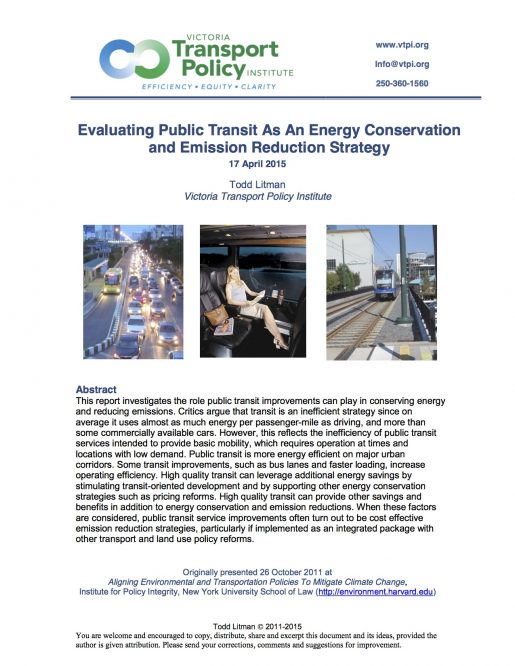
Authors
Publication Date
April 17, 2015
Tags
Resource Type
Evaluating Public Transit As An Energy Conservation and Emission Reduction Strategy
This report investigates the role public transit improvements can play in conserving energy and reducing emissions. Critics argue that transit is an inefficient strategy since on average it uses almost as much energy per passenger-mile as driving, and more than some commercially available cars. However, this reflects the inefficiency of public transit services intended to provide basic mobility, which requires operation at times and locations with low demand. Public transit is more energy efficient on major urban corridors. Some transit improvements, such as bus lanes and faster loading, increase operating efficiency. High quality transit can leverage additional energy savings by stimulating transit-oriented development and by supporting other energy conservation strategies such as pricing reforms. High quality transit can provide other savings and benefits in addition to energy conservation and emission reductions. When these factors are considered, public transit service improvements often turn out to be cost effective emission reduction strategies, particularly if implemented as an integrated package with other transport and land use policy reforms.